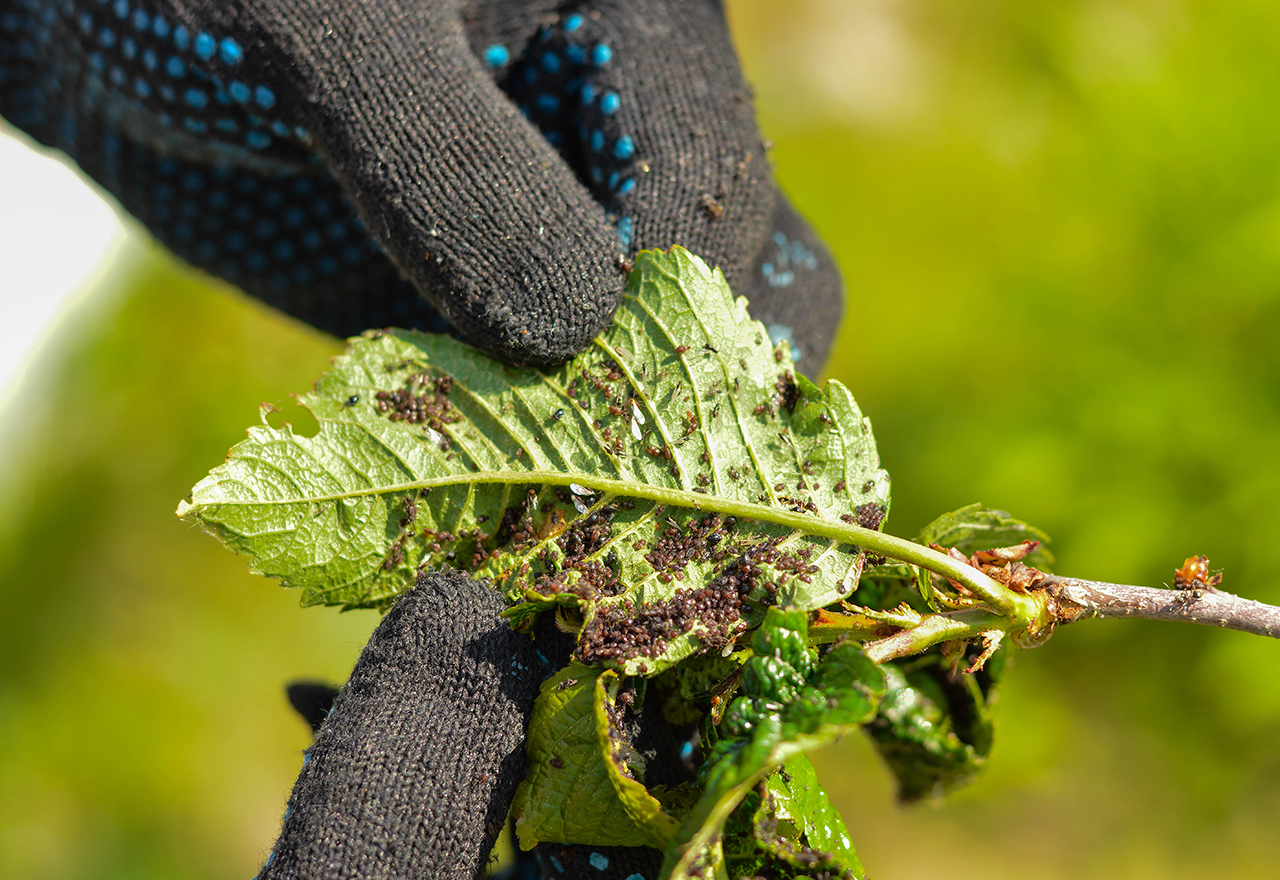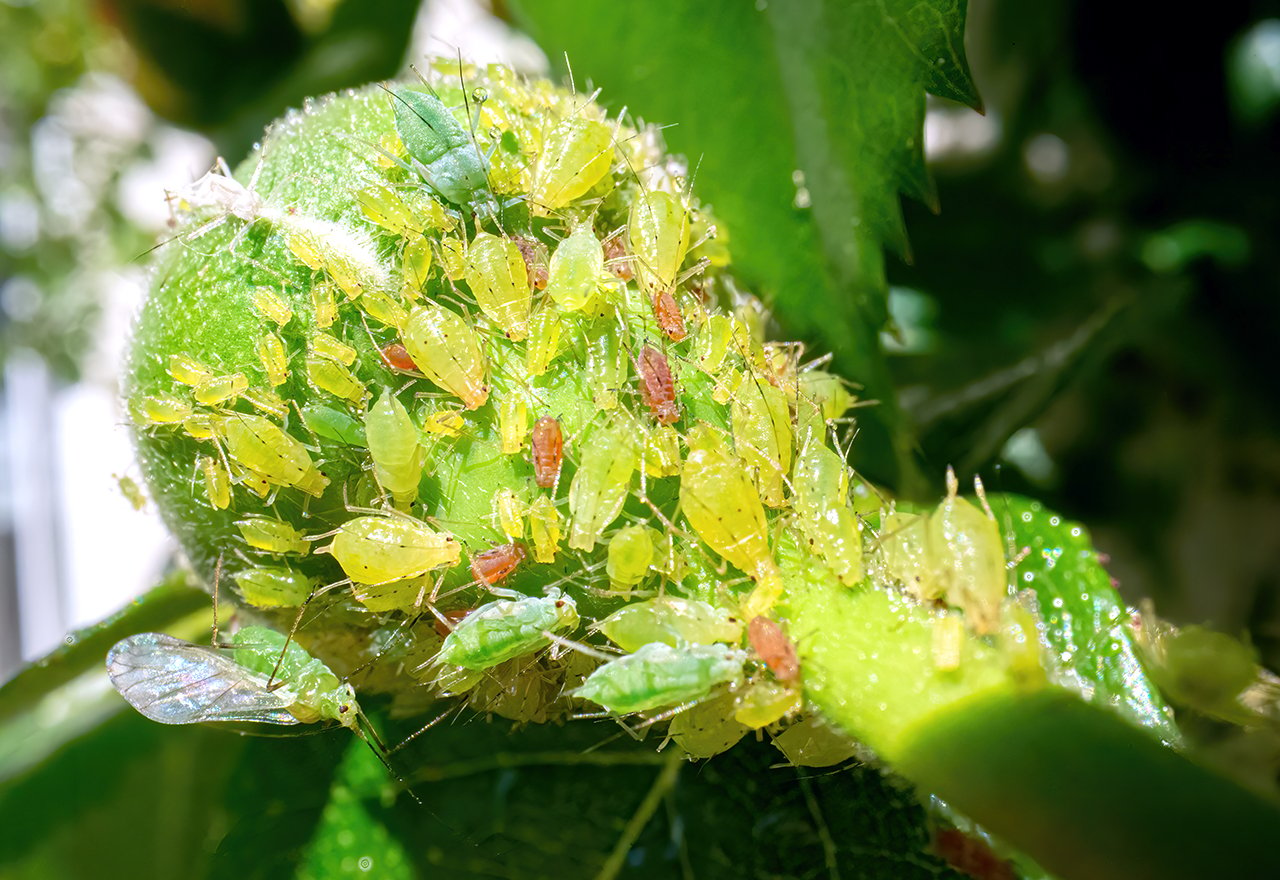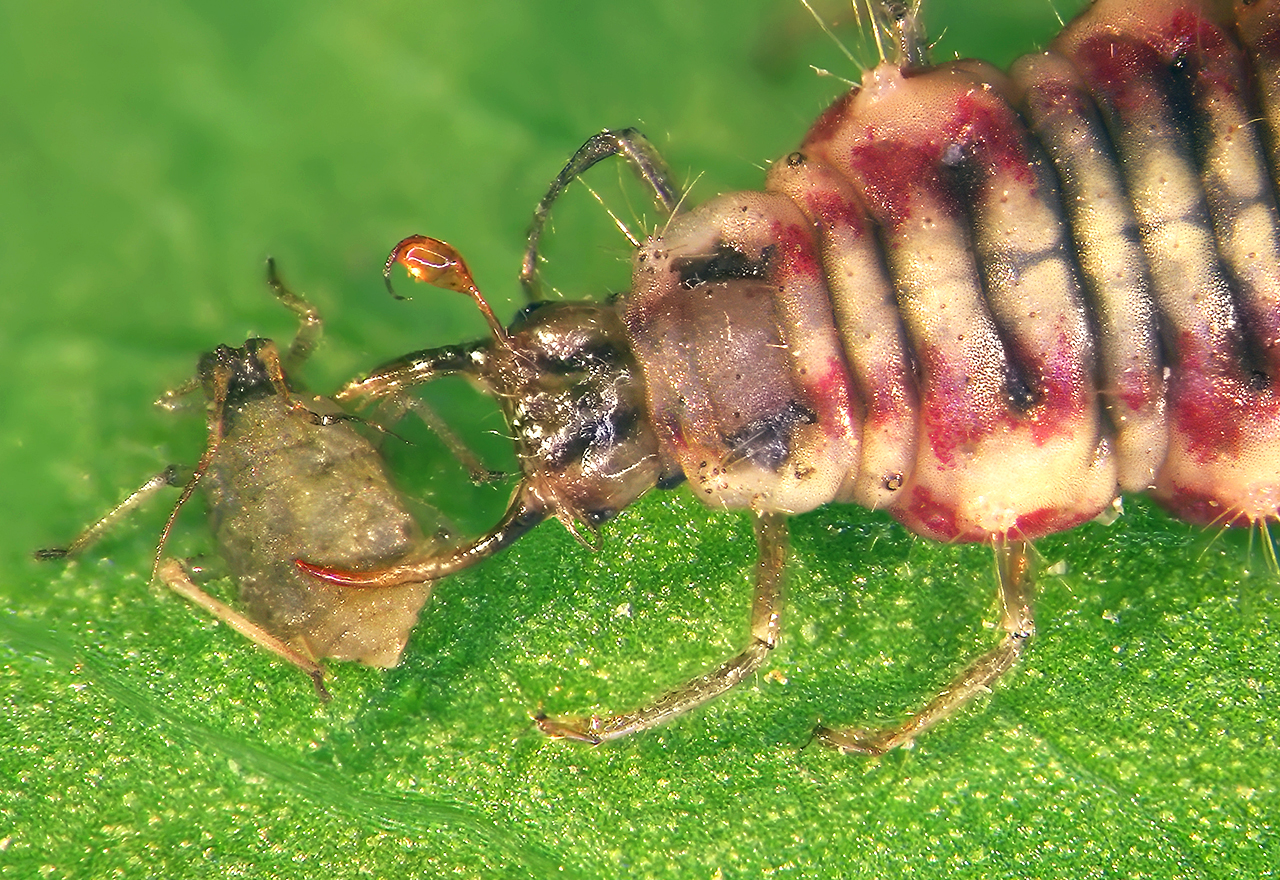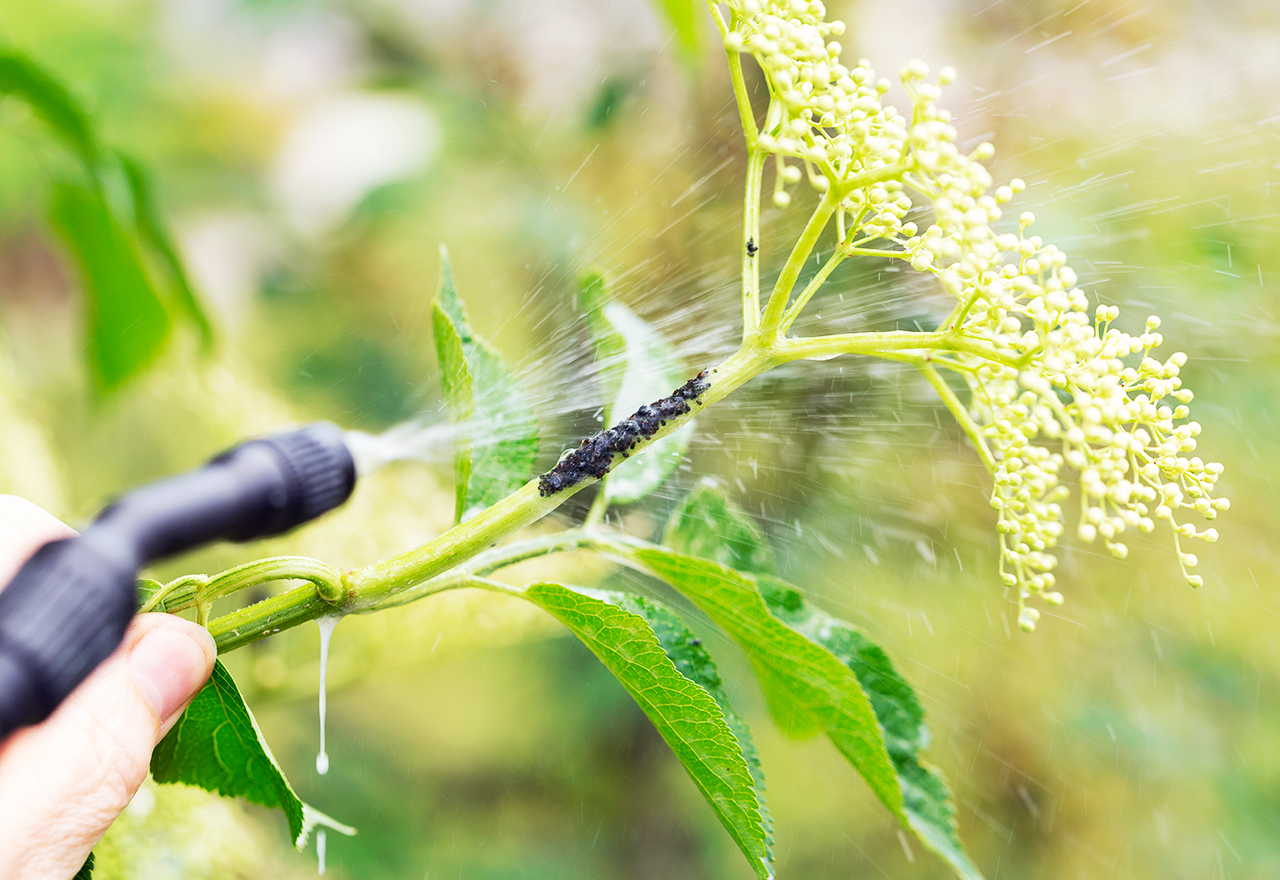2023: The Year of the Aphid?
by Maureen Wise, on July 28, 2023

Seasonal weather conditions have made this growing season ideal for Aphids to run wild this year. 2023 has seen a record number of Aphids on garden and veggie plants but hope is on the way.
An Aphids Refresher
There are many varieties of Aphids - over 1,300! They are all very small, just 1/16 to 1/8 of an inch. As you would expect with so many species, Aphids' coloring can vary greatly: green, peach, off-white, reddish/pink, or black. They all are pear-shaped with soft bodies and very quick to reproduce. Aphids have mouthparts that suck nutrients from plants and extract sap from plant leaves, buds, stems, and even roots. Aphids also expel material out of their abdomen, a quick-hardening defensive liquid called cornicle wax but more often called “honeydew.” With large numbers of Aphids, honeydew can become a nuisance on patio or garden furniture, decks, lawn playsets, or cars. Plants can wither and die if too many Aphids suck their sap (but in small numbers, Aphids are not a threat). Mold often forms on honeydew, which is both unsightly and unhygienic. Aphids have many predators including ladybugs (more technically called lady beetles), aphid midges, both green and brown lacewings, hover flies, as well as some fungi, and more.

Aphids vs Water
This year’s unusually cool and dry Spring has created ideal conditions for nearly all varieties of Aphids to thrive. Aphids do not like water and so our normal Spring rains, which will typically keep Aphid numbers low, did not do so this year.
Aphid Predators Are Winning
Aphids’ usual insect predators were late to hit the scene this season because of the lower temperatures. As Summer progresses, we expect to see more predators taking care of the Aphids and many are reported to be back in action.

Multicolored Asian Lady Beetles are a ladybug that actually deposits their eggs right in the middle of a busy Aphid community so that the newly emerging lady beetles have something to eat right away. Both green and brown lacewings larvae are mean-looking predators with sharp, scythe-shaped mandibles, as shown in the above photo eating an Aphid. Both species' numbers seem to be increasing as the Summer progresses. Both the adults and the larvae of hover flies eat Aphids as well and are on the rise. Additionally, parasitoid wasps lay their eggs directly into the bodies of Aphids. The developing wasp eats away the inside of the Aphid and then hatches out, finally killing the pest. Some counties have seen unusually large numbers of these wasps.

Because Aphid predators are on the rise, we discourage you from spraying traditional insecticide on any plants that are infested as the treatment will also harm the buggy predators. We can recommend Rose Rx 3, which we sell in our online store. It contains Neem Oil and is safe for kids, pets, soil biota, and waterways. We’ve also found that a heavy spray of water from your garden hose that mimics a hard rain often does the trick in keeping Aphids at bay.
Have you seen Aphids in your yard this year? Are their predators helping to keep them in check?










